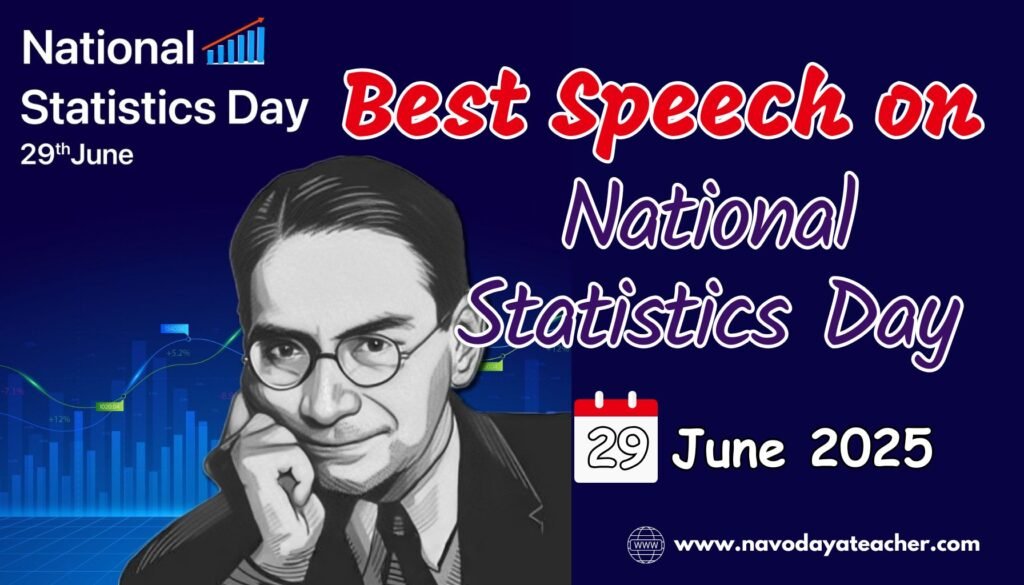In this article we providing information regarding latest Best Speech on National Statistics Day – 29 June 2025.
Best Speech on National Statistics Day – 29 June 2025
Respected Principal Sir, Teachers and My Dear Students Good Morning to All.
The Day marks the birth anniversary of Prof. Prasanta Chandra Mahalanobis, known as the “Father of Indian Statistics”.
The National Statistics Day is observed on 29th June to popularize the use of Statistics in everyday life. The day commemorates the Birth Anniversary of Prof. PC Mahalanobis
The day makes people understand how statistics help in shaping and framing the policies. The day is celebrated with different themes every year.
The Objective is to raise awareness about the role of statistics in shaping policies, governance, socio-economic planning, and development. Aimed to popularize the use of statistics in everyday life and promote statistical thinking among students and researchers.
Who is Prof. P.C. Mahalanobis
- Born – 29 June 1893 and known as Father of Indian Statistics.
- Founder of Indian Statistical Institute (ISI) in 1931, Kolkata.
- Introduced Mahalanobis Distance, a statistical measure widely used in pattern recognition.
- Designed India’s Second Five – Year Plan focusing on industrialization.
- Contributed significantly to large-scale surveys and sample techniques.
- Fellow of the Royal Society.
The Indian Government decided to celebrate the day on the outstanding contribution made by Late. Professor PC Mahalanobis in the field of economic planning and Statistics and therefore the day mark his birth annivarsary.
Professor PC Mahalanobis was born on 29 June, 1893 Calcutta, India. He died on 28 June 1972 in Calcutta. He was an Indian Statistician. He established the Indian Statistical Institute in Calcutta on 17 December 1931.
The Event will raise awareness in people mainly among the younger generation, about the role of Statistics in Socio-Economic planning and policy formulation.
Thanks to Beloved Readers.













